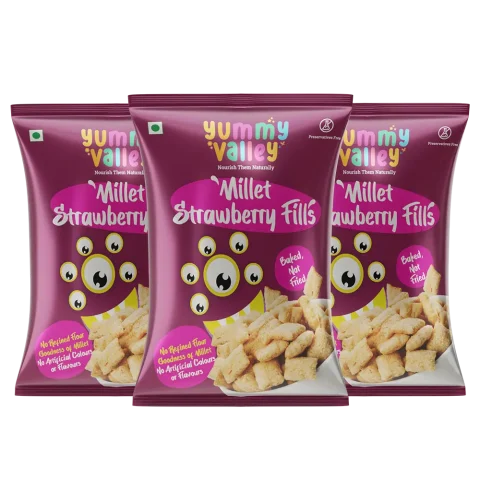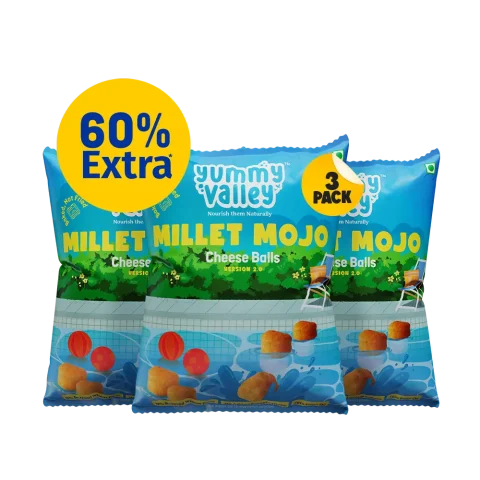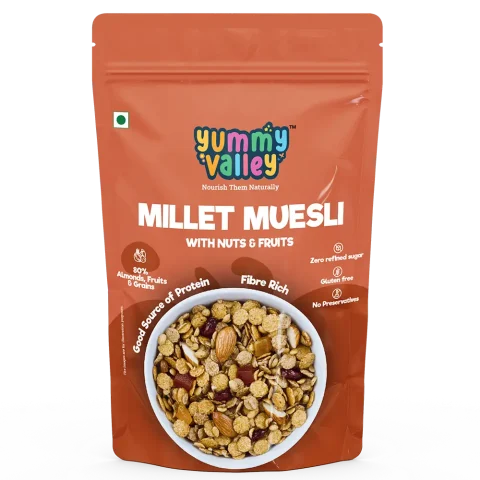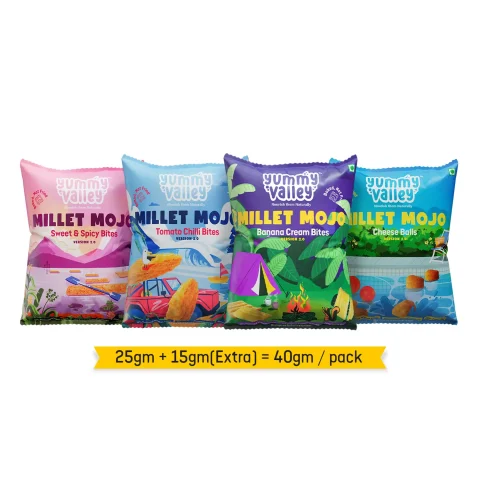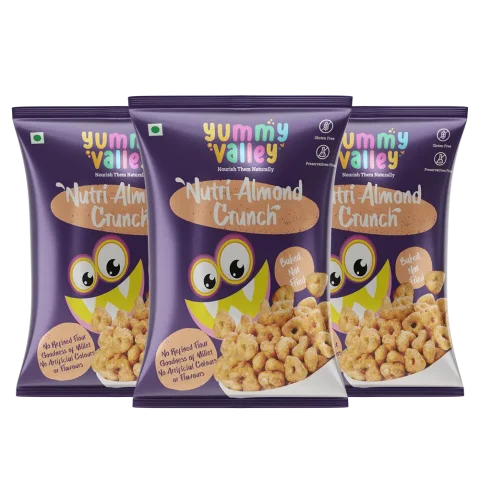Kutki Millet Benefits and Side Effects: The Ultimate Guide
- Published on:
- Last update: 27 March 2025
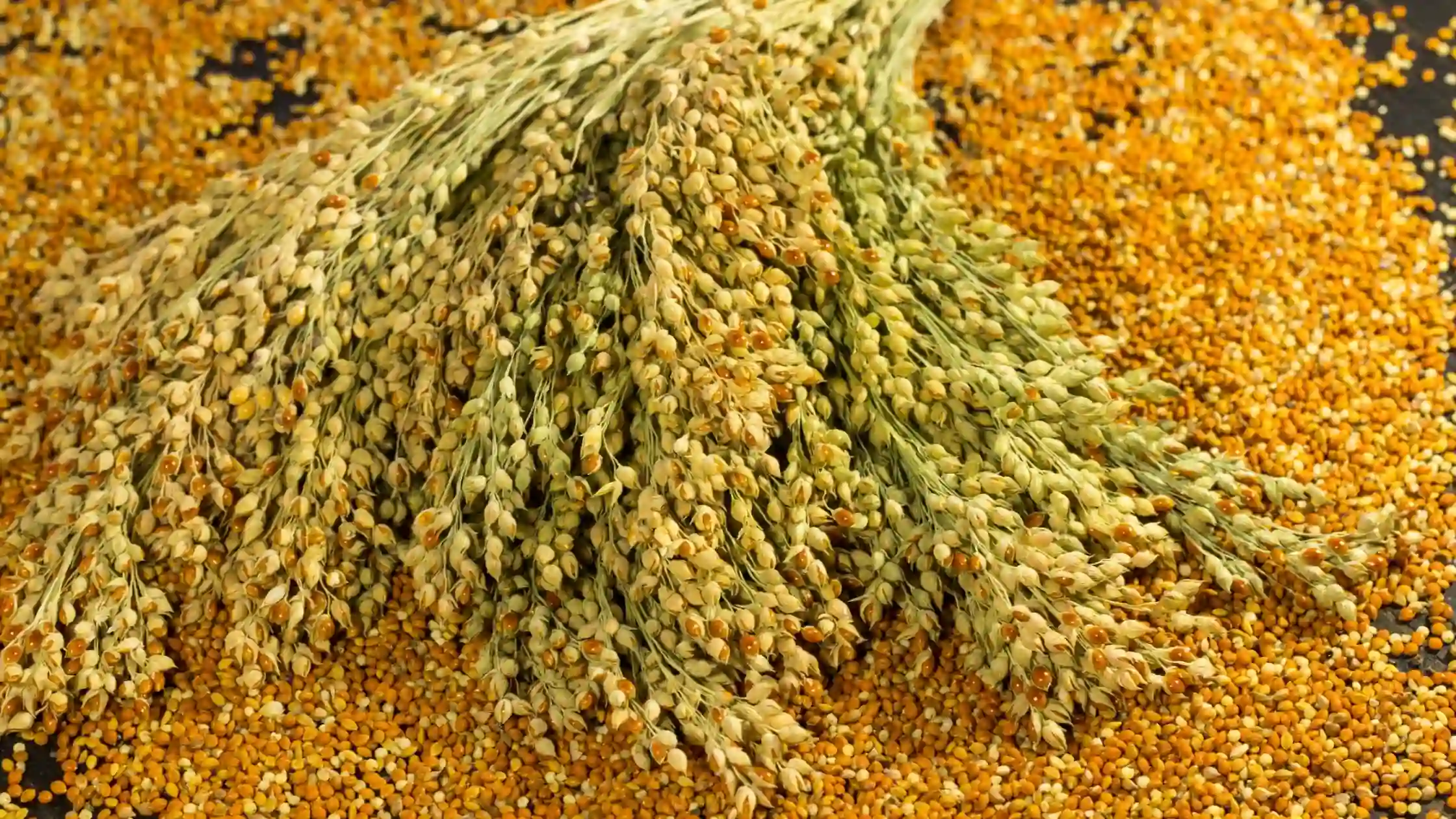
Are you in search of Kutki Millet to know more about its benefits? Then you are in the right place. In this article, we have got everything covered about the Kutki Millet Benefits, Nutrition, Uses, Recipes, and Side Effects. So let’s dive in.
What is Kutki Millet?
Kutki millet (Panicum sumatrense) is a type of small grain that has been cultivated in Asia for thousands of years. It is also known as little millet. However, in recent times, people have preferred rice and wheat over millets, because they get them at cheaper prices from the government. Millets did not get much attention from scientists and farmers when they were trying to increase crop production.
As a result, Kutki millet has not been very productive, even though it has some good qualities like saving water and surviving heat. But, if people pay more attention to Kutki millet, they can get more nutrients and also protect their farms from climate change. They can also earn some money by selling Kutki millet.
Kutki millet is planted during the rainy season, usually in June. This wonder doesn’t play by the rules of slow growth! It thrives in the oddest spots, be it parched terrain or stingy soil. And guess what? It’s a high-altitude superstar, hitting heights up to 2100 meters like a champ!
Usually, Kutki millet is planted with other crops, like beans, gram, or sesame, and it does not need much care or input. This way, this millet helps farmers to use their land better and produce more food, instead of relying only on rice and wheat. Kutki millet is also more resistant to pests and diseases than other grains. Moreover, it can be stored for a long time without getting spoiled by insects, which means that farmers and their families can have food and variety in their diet when there is not enough food available.
Kutki Millet Nutritional Value per 100g
| Nutrient | Value per 100g |
|---|---|
| Calories | 329 kcal |
| Protein | 9.7g |
| Fat | 5.2g |
| Fibre | 7.6g |
| Carbohydrate | 60.9g |
| Calcium | 17mg |
| Iron | 9.3mg |
| Phosphorus | 220mg |
| Magnesium | 114mg |
Kutki millet (Panicum sumatrense) is one of the small millets that have less fat and more fibre and protein than other grains. It has more of the amino acids Cysteine and Methionine, which have sulfur in them, and its amino acids are more balanced than other grains.
Kutki millet packs a punch with iron, carotene, and zinc—awesome for your health! But hold up, it’s got a few tricky bits too—tannins, phosphorous, and phytic acids that can make it a tad tough for your body to nab nutrients like iron, calcium, zinc, and even proteins and carbs.
But, these things can be reduced when you process Kutki millet. For example, when you remove the outer layer, or when you cook it in different ways, these things can become less.
Benefits Of Kutki Millet
Little millet, also known as kutki, is a superb choice for fitness enthusiasts seeking a healthy alternative to rice. Packed with fibre and essential minerals like potassium, zinc, iron, and calcium, along with vitamin B3, it aids in fat metabolism, supports tissue repair, reduces cholesterol, and enhances energy production. A nutritious addition to your diet.
Here are some of the kutki millet benefits for your health;
1. Helps to manage diabetes
It’s like a sugar rollercoaster wreaking havoc on your eyes, bones, heart—the whole shebang! Now, here’s a little ray of hope: Kutki millet might just be the secret superhero for folks dealing with diabetes.
A study done on rats in 1999 found that Kutki extracts could lower blood sugar levels and protect against alloxan, a chemical that causes diabetes-related damage. This suggests that Kutki may help prevent or reduce the complications of diabetes. However, before using Kutki, you should talk to your doctor and learn more about how Kutki powder may help with diabetes.
2. May help in dealing with obesity
Obesity, when fat takes the driver’s seat, leading to inflammation and cell damage, isn’t a walk in the park. But here’s something intriguing: Kutki, a Himalayan-grown millet, boasts a bunch of health perks, potentially dialling down inflammation by tackling certain troublemaking chemicals. It could be a game-changer for folks dealing with obesity or inflammatory conditions, but hey, a quick chat with your doctor before diving into Kutki? Always a smart move.
3. May slow down the growth of cancer
Kutki is a type of millet that has some substances that may fight against cancer. A study done in 2011 found that Kutki extracts have flavonoids, phenolic acids, and antioxidants, which are chemicals that can make cancer cells die in the breast, liver, and prostate. This means that Kutki may help slow down the growth of cancer. However, if you think you have cancer, do not try to treat yourself with Kutki. Talk to your doctor about how Kutki may help and get proper treatment.
4. May manage liver health
The liver, a true multitasker, pulls weight in digestion, hormone production, and detox. Now, here’s a fascinating tidbit: Kutki millet might just bring some perks to the liver.
A study done in 2022 found that Kutki extracts have Kutkin, which is a chemical that can protect the liver from harmful substances. Kutki extracts also have other chemicals that can help reduce the damage caused by alcohol to the liver. Kutki’s been a potential aid for issues like jaundice, fever, and hepatitis, but when it comes to liver cirrhosis, the big leagues of liver troubles, more research is needed to nail down its impact. If liver issues are on your plate, hold off on Kutki without the green light from a pro.
5. May help in dealing with Stomach Ulcers
Stomach or intestinal ulcers—a painful consequence of stomach acid chipping away at the digestive tract lining. Now, here’s something intriguing: Kutki millet might just offer a helping hand for the stomach.
The extract makes more mucus, which covers and protects the stomach and intestinal lining from the acid. The extract also reduces the amount of chemicals that cause ulcers. This means that Kutki may help people who have ulcers. However, it would help if you did not use Kutki by yourself. You should ask your doctor about how Kutki may help your stomach.
Uses Of Kutki Millet
Kutki millet is a type of small grain that has been used in Ayurveda for its medicinal and nutritional benefits. It is also known as Little Millet or Picrorhiza Kurroa. It grows in the Himalayan region and has a bitter taste.
Here are some of the uses of kutki millet;
1. Treating Liver Problems
Kutki millet has been used to treat jaundice and other liver-related conditions. Kutki millet comes packed with hepatoprotective powers, shielding your liver from harm and infections. Plus, its anti-inflammatory and antioxidant mojo can dial down liver inflammation and battle oxidative stress. Thanks to a chemical called kutkin, it also steps in to suppress those pesky substances that could otherwise harm your liver.
2. Lowering Cholesterol Levels
Kutki millet may help reduce cholesterol levels and improve lipid profile. Kutki millet steps up by reducing bad cholesterol (LDL) and triglycerides while boosting good cholesterol (HDL). It doesn’t stop there—by preventing the oxidation of LDL, it puts the brakes on artery-clogging plaque formation. Packed with flavonoids, phenolic acids, and antioxidants, this millet works magic by regulating lipid metabolism and warding off cardiovascular diseases.
3. Regulating Blood Sugar Levels
Kutki millet steps in as a potential ally against diabetes, working to balance those blood sugar levels. It increases insulin sensitivity, helps cells nab glucose, and even puts a lid on glucose production in the liver. Plus, it’s a handy defender against diabetes complications like kidney, nerve, and eye issues. Packed with glycosides, and alkaloids, Kutki millet acts as a natural squad of hypoglycemic agents.
4. Suitable Substitute For Rice
Kutki millet can be used as a suitable substitute for rice, especially for people who want to lose weight or have diabetes. It has less fat and more fibre and protein than rice. Additionally, it doesn’t spike blood sugar levels after eating because of its low glycemic index. Kutki millet can provide a feeling of fullness and satiety, and reduce the calorie intake. It can be cooked like rice, or made into porridge, khichdi, or dosa.
5. Fighting Infections
Kutki millet can fight infections and boost the immune system. It brings antimicrobial muscle to the table, tackling specific bacteria and fungi. Plus, it’s a savvy guardian against parasites and intestinal worms. Packed with cucurbitacins, it plays a role in stalling the growth of cancer cells. Not just that—it’s got your back with neuroprotective vibes, shielding the brain from degeneration.
Also read: 10 different types of millets and their benefits
you save ₹15
you save ₹44
Kutki Millet Recipes to Try
Here are some of the amazing recipe ideas you can try the kutki millet;
1. Kutki Millet Pulao Recipe
Get ready for a flavour-packed adventure with this Kutki millet pulao! Packed with protein, fibre, iron, and those sneaky antioxidants, this small-grained wonder is gluten-free and oh-so-easy on the tummy. It’s not just a meal—it’s a one-pot wonder that’ll steal the show at lunch or dinner!
Ingredients
- 1 cup kutki millet, washed and soaked for 30 minutes
- 2 tablespoons oil or ghee
- 1 teaspoon cumin seeds
- 2 bay leaves
- 4 cloves
- 4 cardamom pods
- 1 inch cinnamon stick
- 1 onion, finely chopped
- 1/4 teaspoon turmeric powder
- 1/2 teaspoon salt, or to taste
- 2 cups water
- 1/4 cup green peas
- 1/4 cup carrot, diced
- 1/4 cup cauliflower, cut into small florets
- 2 tablespoons chopped coriander leaves, for garnishing
Instructions
- In a pressure cooker, heat oil or ghee.
- Put in the cumin seeds, bay leaves, cloves, cinnamon, and cardamom.
- Let that sizzle and fill your kitchen with amazing smells.
- Sauté Onions till they turn a beautiful golden brown.
- Add Kutki millet, turmeric, salt, and a splash of water. Mix it up, and let it bubble.
- Add in those green peas, carrots, and cauliflower, and then seal the cooker.
- Let it whistle away for 2 rounds on high heat, then simmer for 5 minutes.
- Turn off the heat, and let that pressure slide off naturally.
- Grab a fork and fluff up that millet.
- Plate it up all fancy, sprinkle some fresh coriander on top, and voila!
- Pair it up with a raita, pickle, or crisp salad for the perfect mealtime harmony!
2. Kutki Millet Daliya Recipe
Summary: A hearty and healthy breakfast dish made with Kutki millet, milk, and nuts. It’s like a morning high-five, loading you up with energy, protein, calcium, and that essential fibre kick. Feeling fancy? Toss in fruits, seeds, or a dollop of honey to jazz it up and amp up the flavour party!
Ingredients
- 1/2 cup Kutki millet, coarsely ground
- 2 cups milk
- 2 tablespoons sugar, or to taste
- 1/4 teaspoon cardamom powder
- 2 tablespoons chopped almonds
- 2 tablespoons chopped pistachios
- 2 tablespoons chopped cashews
- 2 tablespoons raisins
Instructions
- Toss that Kutki millet in a skillet.
- Give it a cosy dry roast for 10 to 15 minutes—keep stirring till it’s golden
- Let it chill for a bit on a plate.
- Pour milk in and crank up the heat.
- Add sugar and cardamom powder and stir well.
- Cook the millet for 15 to 20 minutes at a low heat.
- Stir till the milk goes all thick and dreamy.
- Sprinkle in chopped nuts and raisins, whirl it, then take it off the heat and put it into a fancy serving bowl.
- Enjoy it hot or chill it down for later.
3. Kutki Millet Pongal Recipe
A traditional and tasty dish from South India, made with kutki millet, moong dal, and ghee. Kutki millet pongal is a savoury and comforting dish that is usually prepared during festivals or special occasions. It is also a good option for diabetic and weight-conscious people, as Kutki millet has a low glycemic index and helps regulate blood sugar levels. This pongal is best served with sambar, chutney, or papad.
Ingredients
- 1/2 cup Kutki millet, washed and drained
- 1/4 cup moong dal, washed and drained
- 3 cups water
- 1/4 teaspoon turmeric powder
- 1/4 teaspoon salt, or to taste
- 2 tablespoons ghee
- 1 teaspoon mustard seeds
- 1 teaspoon cumin seeds
- 1/4 teaspoon asafoetida
- 2 dried red chillies, broken
- 10 curry leaves
- 2 tablespoons chopped cashews
- 2 tablespoons chopped ginger
- 2 green chillies, slit
Instructions
- Pop Kutki millet, moong dal, water, turmeric.
- Add a pinch of salt to the pressure cooker.
- Give it a good mix and lock the lid.
- Let it whistle away for 3 rounds on high heat, then simmer for 10 more minutes.
- Once the heat’s off, let that pressure take a natural rest.
- Now, give the millet-dal duo a gentle mash. Set it aside for the magic finish.
- Ghee should be heated in a small pan over medium heat.
- Toss in mustard seeds, cumin seeds, red chillies, curry leaves, cashews, ginger, and green chillies.
- Fry it up until those cashews turn a lovely golden hue and the spices do a bit of a sizzle dance.
- Pour the tempering over the millet and dal mixture and mix well. Adjust the consistency by adding more water if needed. Reheat the pongal if required and serve hot with sambar, chutney, or papad.
Side Effects of Kutki Millet
Overdosing on Kutki may result in adverse effects such as vomiting, rash, anorexia, diarrhoea, dizziness, headache, abdominal pain, and itching. Caution is advised, especially for individuals on diabetic medication, due to its anti-hyperglycemic properties.
Here are some of the side effects that you may face if you take too much Kutki millet;
1. May Cause Nausea And Vomiting
Kutki millet can upset your stomach and make you feel sick. Overdoing it might lead to throwing up, potentially bringing on dehydration and messing with your electrolyte levels. Keep an eye on those recommended doses. You should drink plenty of water and avoid taking Kutki millet on an empty stomach.
2. May Cause Low Blood Pressure
Kutki millet can lower your blood pressure by relaxing your blood vessels. For those grappling with high blood pressure, Kutki could be a boon. But for those dealing with low blood pressure or heart concerns, it might pose a risk. Watch for signs like dizziness, fainting, or chest discomfort; they could signal your blood pressure is taking a nosedive. If you’ve got a history of heart conditions or are on blood pressure meds, better skip the Kutki millet and keep tabs on that blood pressure.
3. May Cause Allergic Reactions
Kutki millet can cause allergic reactions in some people. Keep an eye out for symptoms like rash, itching, swelling, or trouble breathing—depending on your body’s sensitivity, these could range from mild to severe. If you notice any signs of an allergic reaction while using Kutki millet, it’s best to halt and seek medical attention.
4. May Cause Liver Damage
Kutki millet can protect your liver from toxins and infections, but it can also harm your liver if you take too much of it. In Kutki millet, there’s a chemical called kutkin that might stir up liver inflammation and harm. Watch out for signals like jaundice, dark urine, or abdominal discomfort that might crop up. You should avoid taking this millet if you have any liver disease or are on liver medication.
5. May Cause Low Blood Sugar
Kutki millet packs an anti-hyperglycemic punch, working to lower those blood sugar levels—a boon for folks with diabetes. But, here’s the catch: if you’re already on diabetes meds and mix in Kutki, you might hit a rough patch called hypoglycemia—cue weakness, confusion, sweating, hunger, or even fainting. Skip the Kutki if you’re on diabetic meds, or have a heart-to-heart with your doctor about adjusting your dosage safely.
Conclusion
Kutki millet isn’t just a grain—it’s a nutritional powerhouse with a range of uses in cooking. It’s a health hero, aiding digestion, regulating blood sugar and cholesterol, preventing anaemia, and giving immunity a boost.
Plus, it’s a gluten-free, resilient, eco-friendly gem that’s been overlooked for too long. Let’s give Kutki millet the spotlight it deserves in our diets—enjoy its deliciousness and all those incredible health perks it brings along!
Share this post:


